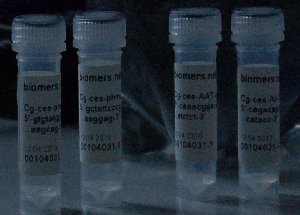Ely Oliveira Garcia, M. Sc.

ß-1,3-Glucan and Glucan binding proteins: Roles in the plant pathogen Colletotrichum graminicola
Normal growth and morphogenesis of fungi are dependent upon the activity of plasma membrane-localized ß-1,3-glucan synthases. These enzymes, together with chitin synthases, form structural cell wall polymers, which confer form and rigidity to vegetative hyphae and to specialized infection structures such as appressoria and infection hyphae growing inter- or intracellularly in their host. Mutations that alter intracellular levels of substrate of these enzymes result in cells with aberrant morphologies, while mutants with undetectable levels of ß-1,3-glucan synthase activity are non-viable, unless cells are grown in medium with providing osmotic support.
The differentiation of fungal infection structures on the plant surface and during plant development is the result of the expression of specific sets of genes which contribute to fungal virulence or pathogenicity in many cases. The aims of this project were to analyse the function of cell wall biosynthesis genes, i.e. genes encoding ß-1,3-glucan synthase and ß-1,3-glucan-binding protein of Colletotrichum graminicola. These proteins are not secreted but reside in the plasma membrane. To functionally characterize the ß-1,3-glucan synthase and ß-1,3-glucan-binding protein genes, the gene expression of the mutants will be analyzed by real time PCR and by GFP-tagging. The goals of the second part of the project are to characterize the glucan and glucan-binding protein genes function of C. graminicola by functional assays using complementation in Saccharomyces cereviseae mutants. After cloning and sequencing the ß-1,3-glucan synthase of C. graminicola, functional assays will be carried by complementation of the corresponding yeast mutants.




